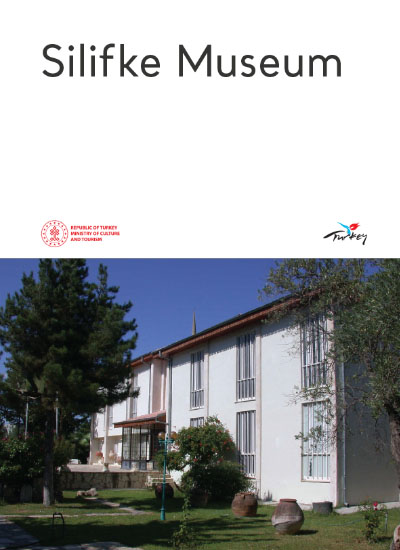The artefacts from Silifke and its surroundings were initially collected in Cumhuriyet Primary School in 1939. In 1958, a section of the same school was utilised as a warehouse and museum. A new museum building was constructed and opened to the public in 1973. The artefacts are displayed in the following halls: Stone Artifacts Hall, Coins and Jewellery Hall, Archaeological Artifacts Hall, Ethnographic Artifacts Hall, and Garden Exhibition. The Stone Artifacts Hall exhibits artefacts from the Archaic, Roman and Byzantine periods. The artefacts on display include findings which reflect their period best, such as Karyatids, sitting statues, amphoras, and relics. The Armoured Emperor Statue, dating to the 2nd century AD, is particularly noteworthy. The statue, measuring 1.93 metres in height, is missing its head. The lower edge of the armour is sliced, and the resulting surfaces display lion, ram, and vegetable reliefs. Medusa's head is depicted on the chest, while underneath, two antithetic gryphons and an eagle with wings wide open are depicted. A belt with a bowtie in the front surrounds the waist. The paludamentum is gathered on the left shoulder and knotted with a brooch. In addition to gold and silver ornaments, silver Persian jewellery, silver coins of Alexander the Great, silver coins of the kings of Macedonia, Thrace, Pergamon, Egypt, bronze Roman coins, Ottoman copper, and gold coins, and gold Byzantine coins are exhibited in the Coins and Jewelry Hall. The Hellenistic Period (330-30 BC) Meydancıkkale treasure, Roman Period (193-268 AD) Ayvagediği treasure, and Susanoğlu treasure of the Byzantine period are of particular interest. The Archaeological Artifacts Hall exhibits findings from the Bronze, Iron, Hellenistic, Roman, and Byzantine Ages. The Hittite hieroglyphic stamp seals recovered from the Kilisetepe Mound excavation, black and red figured vessels recovered from the Kelenderis excavation, Hellenistic, Roman Period vessels, Byzantine period relics, weights, oil lamps, candlesticks, and bread baking tins are housed in the hall. The Ethnographic Artifacts Hall displays a variety of items from the region's recent history, including textiles, hand embroidery, ornaments, weapons, and other ethnographic items from the Late Ottoman Period and the Republican Period. In the Garden of the museum, visitors can view a selection of column capitals, frieze fragments, architectural elements and sitting statues, sarcophagi, stelae and pithos from the Antique and Late Antique period. Additionally, the collection includes artifacts from the Ottoman period, such as gravestones and fountain inscriptions.
SİLİFKE MUSEUM


